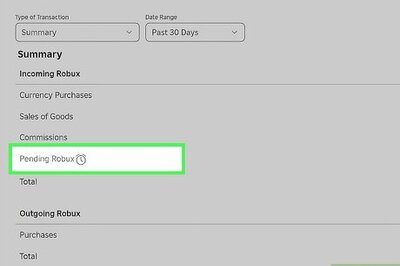
views
New Delhi: On Tuesday morning, Delhi woke up to a toxic haze with air quality levels shooting up to ‘severe’. A day later on Wednesday, the situation doesn’t look any better. In determining the reasons behind such hazardous conditions, the Supreme Court, along with other agencies had time and again explored different ways to tackle the issue.
Of late, the Supreme Court-mandated Environment Pollution Prevention and Control Authority (EPCA) has been monitoring truck movements in and around Delhi to determine their contribution to the pollution over a period of one month.
The apex court had earlier asked all trucks that are not headed for Delhi and have destinations outside the capital, to not enter the city premises.
Manning the foggy toll booth at Kalindi Kunj, Chandra Pratap Singh had an unusually active night on Sunday, November 5. The hours between 10pm and 5am, when Singh and thirty other men check the trucks entering Delhi, are usually hassle-free. However, this Sunday was different as a team of EPCA officers landed up here to figure out how these trucks are contributing to Delhi’s alarming levels of pollution.
EPCA Chairman Bhure Lal admitted that there is no basic data as to where do these trucks go, how old are they and how do they add to the pollution. Yet, these trucks headed for Delhi or those passing by, are often blamed for polluting the city’s air.
“How many trucks enter Delhi, where do they go, how old are they, how much and what goods do they carry or what fuel do they use, we do not have any answers to these,” Bhure Lal, chairman of EPCA told News18.
With the ongoing survey, EPCA attempts to fill some of these information gaps by November 8, so that they have proper mechanisms in place to monitor truck movement and check the subsequent pollution.
The 30-day survey includes constant video monitoring and 24-hour in-person surveillance by a team from VaaaN Infra, an agency contracted by the EPCA.
Ultimately, the pollution control body is planning an automated RFID system (Radio Frequency Identification) of vehicles using small electronic devices, with which a truck’s data and weight is automatically recorded and fined if at fault.
“We check the bilti (tax invoice) of each truck and note down the destination, the particulars of the consignor, the consignee, goods carried and its GST details,” Bhure Lal said, while walking News18 through the process.
Across the road, three cameras mounted on a pole monitor the number of trucks passing. VaaaN later tallies the data with the national VAHAN database to determine the age of the vehicles.
Other entries on national highways, too, have EPCA developed weigh-in-motion machines that can determine the weight of a truck without stopping it, but these are yet to start working.
The Kalindi Kunj toll booth, near the Delhi-Noida border, is a mid-range site and being surveyed by 9-10 men, explained VaaaN Chief Project Officer Barinder Sethi. Rajokri in southwest Delhi, on the other hand, is a major entry point contributing to about 35 percent of Delhi’s truck movement and requires 18 people for the survey.
“The survey was conducted across 20 of Delhi’s 46 entry points, that handle 80 percent of the truck movement,” said Polash Mukherjee, Research Associate with the Centre for Science and Environment, who has been monitoring the survey sites each night. Other smaller areas will also be looked at, he added.
Initially, police cooperation or the camera feed were not very smooth and helpful for the surveyors. On Sunday, at least one truck tried to rush past the booth without paying a toll or getting checked, while a few Rs 100 notes fluttered out of its window. Watched closely by the police and the EPCA, the MCD staf forced it to stop.
“Is the police cooperating tonight,” an EPCA member asked the VaaaN team when they reached the spot on Sunday.
“If the truck doesn’t stop at these points we keep a car ready to chase it down,” said Chandra Pratap, watching his men harangue a would-be runaway.
Kalindi Kunj sees roughly 400 trucks a night, coming mostly from Noida and Dadri in western Uttar Pradesh. Half of these trucks head towards Delhi and the other half towards other cities.
However, trucks headed for other cities will soon take a different route, said Bhure Lal. The long-awaited Eastern and the Western Peripheral Expressways — each 135km long — meant for trucks to bypass Delhi, will finally be ready by the middle of 2018. These expressways were supposed to be operational in August 2017.
“We need to make a correct road design,” Bhure Lal said. “There are 500 to 700 trucks every night at the Tikri border but no way to turn them around if they can’t enter Delhi. We are trying to build a turnaround point at Kapashera border.”
“At least we can stand here this year” said Sethi. “During last year’s pollution, our eyes would burn if we were outside.”



















Comments
0 comment